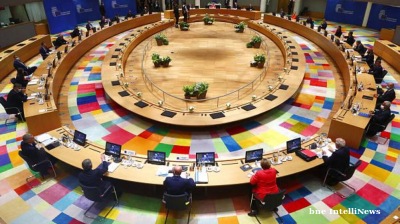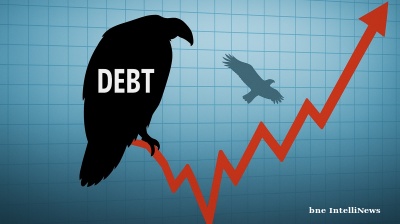In the remaining months of this year Uzbekistan hopes to hold its first three major IPOs in carmaker UzAvto, metallurgical business UzMetKombinat and the leading mortgage bank in the country Qishloq Qurilish Bank (QQB) that will kick off the privatisation of its first big assets.
The plan is to sell small stakes in each of these household names to the local population and at the same time open up the equity market to retail investors. Public companies will also improve transparency and accountability in preparation for the international lists that will follow in the next few years. A few intrepid foreign investors are expected to participate in the first round of IPOs too.
But a lot of unanswered questions remain. The Uzbek domestic capital market remains small and doesn't have enough liquidity to buy all the shares on offer, so the government is using “People’s IPOs” to market the listings and educate the population in the hope of attracting fresh money to the market. The population is believed to have some $5bn in non-banked savings, some of which can be mustered to support the IPOs.
The exact size of the stakes to be sold in each company will depend on demand, and the authorities need to be careful about pricing the stocks at a level low enough so that first-time retail investors will see some upside to encourage them to continue to participate in future listings.
Odilbek Ishakov, Uzbekistan’s deputy finance minister, told bne IntelliNews there are currently 23 companies in the IPO pipeline queue in the next few years.
“We are focusing first on the domestic market and offering shares to everyone,” says Isakov. “The size of the stakes will depend on the demand and we need to sell at the right price. But some of the IPOs will also go straight to the international market.”
UzAvto
Among the few really successful investments that happened under former president Islam Karimov was the establishment of an automotive complex. Karimov flew to Korea to single-handedly negotiate with the chain-smoking founder of Daewoo, Kim Woo-Jung, and then set up a factory in Uzbekistan’s town of Andijan. The business went through several ups and downs, but was taken over by US carmaker GM after Daewoo went bust, and more recently was taken over by the state when GM pulled out of Uzbekistan.
Now a small 2-5% stake in the company is being put on the block with a preliminary $2bn valuation, as part of the first round of “People’s IPOs” this autumn. Freedom Finance will underwrite the IPO; originally a Russian brokerage, but after a stint in Kazakhstan, it is now based in New York and listed on NASDAQ.
After the IPO the company is planning an international listing. Aziz Shukurov, UzAvto’s deputy chairman, told bne IntelliNews on the sidelines of the Uzbek Economic Forum that the company is already talking to JP Morgan, Citibank and other leading international investment banks about an international SPO that could happen in the coming few years.
On paper it should be an attractive listing. Swedish automotive executive Bo Andersson, who previously modernised the Russian GAZ carmaker based in Nizhny Novgorod, has been hired by the Uzbeks to run and modernise the business. The company has a 95% market share and enjoys strong support from the state, which has set high tariffs on imports of any other type of car. Almost all the cars on the streets of Uzbekistan are white Chevrolets made by the factory.
The company’s 2021 net income was $166mn under IFRS, with a production volume of 235,000 vehicles. That year the company also issued a $300mn Eurobond in London to fund its modernisation programme.
This year, the plan is to increase production to 400,000 car units – it has already sold 260,000 cars and another 170,000 have been pre-paid, but not built yet – but that figure is anticipated to rise to around 500,000 next year, simply because of the growing size of the population, Shukurov told bne IntelliNews. By 2026 revenue are projected to double compared to 2021.
“Our market is booming with lots of pre-paid orders that we need to build and deliver,” says Shukurov. “The volume of production will rise to 500,000 next year without trouble and the EBIDTA will grow as a result.”
UzAvto used to export a lot of cars to Russia where its US brand couples with its Uzbek prices to make it one of the most popular cars on Russia’s roads. However, since the war in Ukraine started GM has banned the exports of Uzbek-made cars to Russia, as they still contain some US technology.
As part of the opening up of the economy, the government has cut those protectionist duties twice in the last year and is due to cut them again in January next year. Plus both Russia and China can import their cars to Uzbekistan duty-free.
“For many years the market has been open to Russian and Chinese imports but they have been unable to compete,” says Shukurov. “There are no duties on these imports, but we have still managed to maintain a 95% market share. If the market is fully opened then our share will surely be reduced, but thanks to the low cost of our fully vertically integrated production we will be able to hold our own. No one else can offer the same prices we do in Uzbekistan.”
In addition to its local production, UzAvto has over 100 dealerships and more than 200 service stations – a level of customer service none of its nearest competitors can come close to matching.
“We have enough competitive advantage,” says Shukurov. “Given the population growth we think the demand is sustainable in the mid-term.”
UzAvto is dominant on its home market, but more recently it has been expanding exports to neighbouring Kazakhstan, where it now has a 40% market share from 40,000 car sales in 2022. Exports to Azerbaijan are also on the radar, which received its first 10,000 cars this year and are expected to triple next year.
UzMetKombinat
Based in Bekabad in eastern Uzbekistan, UzMetKombinat is Uzbekistan’s biggest steel maker and its output accounts for a third of the entire country's ferrous metal consumption.
The company hopes to float about 5% of its shares and raise circa $20-40mn from the listing.
Founded in 1942 in Soviet times, since Mirziyoyev reforms began it has been through several rounds of modernisation where production capacity was more than doubled and several new value-added products introduced. As of January 1 the total production capacity exceeded 1mn tonnes per year (tpy) of ferrous metal.
UzMetKombinat is also a regional player, exporting metal to neighbouring Kazakhstan and Tajikistan, and in 2022 the company expanded into the European market and the Baltic States in particular.
The company earned revenues of $822mn in 2021, with two-thirds of that coming from long products. However, the management development plan is to boost revenues to $1.7bn by 2026 as it reduces the share of long products to 35% of the total output after the introduction of a hot rolled product facility that is due to come online in 2024 and will deliver an estimated 40% of production by 2026. The company has a $1bn investment programme that will lift total production to 2.5mn tpy in the next five years.
“We saw good profit growth in 2021 with a doubling of EBTIDA after one of the investment projects was completed,” says Karen Srapionov, the CEO of Avesta, the leading Central Asia-focused investment bank and brokerage, that is advising on the IPO. “And the EDITDA margin grew to 19%.”
UzMetKombinat issued a UZS50.6bn ($4.5mn) corporate bond in 2021 and overhauled its corporate structure to improve transparency as part of that process.
This year the company has signed a MoU with the European Bank for Reconstruction and Development (EBRD) as part of a decarbonising programme. UzMetKombinat is also seeking its first ESG rating and is developing a long-term ESG strategy.
Qishloq Qurilish Bank (QQB)
The top-ten state-owned bank QQB and the biggest mortgage lender in the country will be the first of the big banks to be sold off. The state dominates the banking sector but it is keen to get out and has put most of the big banks onto the privatisation list.
Like the other IPO candidates, the size of QQB’s stake has not been decided yet and will depend on demand. Currently 14 banks already have small stakes listed on the Tashkent Stock Exchange (TSE), but the liquidity and turnover is low, less than $1mn a day, says local market participants. The price-to-book ratio is also a low 0.5x and the price to earnings a low 4.9x.
“All the banks are trading a discount,” says Srapionov. “The goal is to decrease the discount by improving the corporate governance and building trust with investors.”
QQB was founded on the basis of Gallabank, an agricultural sector specialist that worked closely with grain farmers. It has kept some of this interest and has become a big player in proving housing in rural regions.
In 2018 as part of the reforms, the state ended the subsidised loans to the agricultural sector and the bank shifted to focus more on retail banking. It raised a $20mn syndicated loan in 2019 with the help of the Asian Development Bank (ADB) to grow this business and launched an online service.
The international development banks have been heavily involved in providing loans to fund retail lending to build up the banking business in recent years. Currently QQB is building out new services for customers and shifting to a universal banking model.
The Ministry of Finance remains the majority shareholder (74%), but the Fund for the Reconstruction and Development of Uzbekistan also holds another 24%, with private companies and individuals owning the rest.
The bank has 44 offices across the country, reflecting its earlier business as a rural bank, and only four branches in the capital. The broad branch network gave access to over 600,000 individual customers, 33,000 companies and 31,600 SMEs.
“The bank’s strategy is to create a universal banking model and establish a one-stop shop service model that meets the needs of our customers,” chairman of the board Alisher Muratov said during the bank’s IPO presentation at the Uzbek Economic Summit in Samarkand at the start of November.
“We also need to ensure the stability of operations by diversifying our funding and increasing deposits,” Muratov added.
Like most of the banks on the privatisation list, QQB has a number of advisors. The International Financial Corporation (IFC) has taken the lead in preparing many of Uzbekistan’s banks for privatisation, but in QQB case it is the ADB has taken the lead, in co-operation with pwc, EY and Deloitte.
Muratov emphasised that the main new directions include building up the mortgage lending business, green financing and Islamic banking as well as investing into new technology and IT, and also modernising the branches.
The bank has already been growing strongly since the reforms started to kick in 2018, two years after the change of president. Assets have more than doubled from UZS12.7 trillion ($1.1bn) in 2019 to UZS24.5 trillion ($2.1bn) as of September 2022, making QQB the eighth-biggest of Uzbekistan’s 33 banks and giving it a 4.55% market share.
The loan portfolio is also diversified but housing related loans account for half the loan portfolio: subsidised mortgages make up a third of credits (31%) and market mortgages another fifth (19%), making QQB the market leader on the mortgage market. Corporate loans accounts for 16% of the loan portfolio, trade 10%, other sectors 20%, but only 2% are consumer loans.
The profitability of the bank has also grown from UZS251bn in 2019, and after dipping briefly during the pandemic, to UZS378bn ($34mn) as of September this year, giving the bank a return on assets of around 2.2% and a return on equity of 18.4%.
BOX: not enough retail investors to go around
One of the tasks the president set in his April 2021 capital markets reform decree was to broaden the appeal of the market and bring in more retail investors. But this is going to be a long slow process. Part of the current drive to IPO the first three big Uzbek corporations is to sell them as “People’s IPOs” and bring in a significant amount of retail investment.
“We need ‘People’s IPOs’ like [the listing of the Russian state-owned banking giant] VTB, but we need to increase people’s financial literacy,” Tashkent Stock Exchange (TSE) CEO Giorgi Paresishvili told bne IntelliNews. “However, there is a risk if the IPO doesn't work and the value of the shares falls after the IPO, which creates bad publicity, as happened with VTB.”
“A People’s IPO can be a double-edged sword, which makes the next IPO hard. We have to be very careful with pricing,” says Paresishvili, “and make sure the price is at the low end of the range to leave some upside for the ordinary investor.”
The government has been organising roadshows across the country and a media campaign to educate the public as to the advantages of alternative investments, but the experience of other countries like Russia shows improving the population’s financial literacy is a very long and slow-moving process. Currently the total amount of retail assets under management remains very small. The entire capitalisation of the TSE in 2020 was only $5bn.
“There is very little retail investment, as this market is still at the early stages of development,” says Paresishvili.
That is going to slow down the privatisation process, as the government can only sell very small shares to the population.
Paresishvili says that if the current retail investors sold their entire portfolios to free up cash to buy UzAvto then they would have enough money to be able to buy the share placement maybe one or two times over. In other words, the government is going to have to attract significant new capital to the market from people’s savings.
“The issue is to get people to change their attitudes to saving, as most people either deposit their money in banks or keep it in cash under the mattress,” says Paresishvili. “And people are not going to use all their mattress money to buy stocks.”
Paresishvili says the government is toying with various schemes to make investments into stocks more attractive, such as offering shares to the employees of the companies being privatised as an incentive for good performance and a way to engage the workforce who then become invested in the success of the company as a partial owner.
Features
_1758174730.jpg)
Indonesia’s Raja Ampat - tourism hub or den of corruption?
In recent years, Indonesia has doubled down on promoting Raja Ampat, a remote archipelago in West Papua famed for its biodiversity, as a global eco-tourism icon.

Flood corruption scandal shakes the Philippines
The Philippines is grappling with a widespread controversy surrounding its flood control programme, with allegations of billions of pesos being siphoned off from projects meant to protect vulnerable communities.

The European Commission proposes to “creatively” tap Russia’s $300bn of frozen assets with Reparation Loans
The European Commission is floating a new idea of how to “creatively” tap Russia’s $300bn of frozen assets without the need to appropriate, which is legally questionable, by replacing the money transferred to Kyiv with EU-backed bonds.

“Yuri Gagarin” cosmodrome seeking a future in space – and tourism
Golden age of spaceport is long over, with Moscow focused on facilities in Russia. Kazakhstan, however, hopes it can find profitable niche in launching satellites.



